Articles by Marco Hernández-Escampa
Human Review, 2022
This work approaches views on the preservation of industrial housing heritage in Malaga, Spain, a... more This work approaches views on the preservation of industrial housing heritage in Malaga, Spain, and the pressure caused by its recent urban renovation. The aims of the research include geographic space analysis and assessing how archaeological recording and archaeometry, specifically archaeometallurgy, can contribute to the preservation of information about structures and materials that continuously disappear from urban contexts. The results constitute an initial beginning to expand a comparative archaeological database for the city. The ideas and procedures presented here are expected to provide some guidance for generating further research from urban, architectural, archaeological, and geographical perspectives.
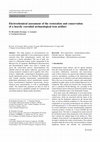
Journal of Applied Electrochemistry, 2010
This study proposes an electrochemical conservation routine applicable to iron archaeological art... more This study proposes an electrochemical conservation routine applicable to iron archaeological artifacts extracted from their archaeological context and later exposed to a marine atmosphere. The case of study consisted of a Nineteenth Century anchor safeguarded in the Mexican City of Campeche. Metallurgical characterization and electrochemical studies were used to evaluate and assess the conservation process (electrochemical free chloride removal and species reduction, passivation and coating treatment evaluation) and to quantify their effectiveness. Additionally, archaeological information regarding the manufacture process was obtained. The techniques used include potential measurement, potentiodynamic polarization (polarization curves), potentiostatic measurements, electrochemical impedance spectroscopy, electrochemical noise measurements, as well as metallography studies. The method here proposed can then be used in analogous set up as a guideline example for evaluation and assessment purposes during similar procedures.
International Journal of Polymer Science, 2013
Acrylonitrile-butadiene-styrene (ABS) is a well-known discard product from the industry. This cop... more Acrylonitrile-butadiene-styrene (ABS) is a well-known discard product from the industry. This copolymer can be dissolved in organic solvents, and thin films can be created by immersion. Two requirements for coatings used for cultural heritage conservation purposes are transparency and reversibility, both fulfilled by ABS films. The aim of this work was to characterize the copolymer and to evaluate the electrochemical properties of ABS coatings applied to copper. Such performance was compared to that of a commercial varnish commonly used in conservation. The results indicate high protection values of the ABS film, generating a potential application for this waste material. The electrochemical techniques included electrochemical noise, impedance spectroscopy, and potentiodynamic polarization.

Archaeometry, 2015
Metallurgical analyses and chemical characterizations were carried out on historical cannonballs ... more Metallurgical analyses and chemical characterizations were carried out on historical cannonballs from the Fortress of San Juan de Ulúa, Veracruz, México. Cannonballs dating from the 18th and 19th centuries share metallurgical characteristics similar to those of material coming from a shipment of ammunition found in the wreck of a sunken French ship from the battle of Trafalgar. The analyses show that the base material is grey cast iron with a carbon equivalent of 4.94 and a ferritic–perlitic matrix, in which the high phosphorus content has led to the formation of iron phosphide compounds in conjunction with a homogeneous distribution of carbon graphite flakes of Type C. In addition, corrosion products from samples revealed the presence of various crystalline iron compounds (X-ray diffraction), mostly highly chlorinated iron compounds identified as akaganeite. X-ray fluorescence identified various characteristics of the corrosion products as a function of the sampling depth. FT–IR spectroscopy revealed that the main difference between the corrosion products (internal and external) is determined by the number of organic species. Differential scanning calorimetry corroborated that these corrosion products are thermally stable compounds at elevated temperatures.
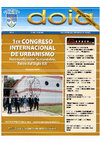
DOIA, 2017
The Butler’s life cycle (1980) has become the main referent for the description of the tourist de... more The Butler’s life cycle (1980) has become the main referent for the description of the tourist destinations’ evolution. It is based on a model that proposes the analysis of the tourist centres’ demand and carrying capacity, establishing a positive relationship between tourists and the accommodation offer (Almeida y Balbuena, 2014). Benalmádena is a coastal town located in Andalusia, particularly on the renowned Costa del Sol (Malaga). This town has undergone an evolution in which it is possible to distinguish the progressive stages that Butler proposes in relation to the evolution of a tourist destination. The aim of this article is to outline the decisive moments of Benalmádena’s tourist evolution following Butler’s model. In order to achieve it, the demographic evolution from the 50s to the present is analysed, which is closely related to the tourism industry development. This industry has caused a considerable migratory movement and, as a result, the native population has been reduced to 13%. The population growth was mainly caused by the job opportunities offered by the tourism industry. El ciclo de vida de Butler (1980) se ha convertido en el referente principal para la descripción del proceso de evolución de los destinos turísticos. Se trata de un modelo que propone el análisis del comportamiento de la demanda y de la capacidad de carga de los centros turísticos estableciendo una relación positiva entre turistas y la oferta de alojamiento (Almeida y Balbuena, 2014). Benalmádena es un municipio costero ubicado en Andalucía, concretamente en la Costa del Sol (Málaga). Esta localidad ha experimentado una evolución temporal en la que es posible distinguir las etapas progresivas que propone Butler en relación con la evolución de un destino turístico. El objetivo de este artículo es esquematizar los momentos decisivos de la evolución turística de Benalmádena adecuándolos al modelo de Butler y para ello se analizará la evolución demográfica desde los años 50 hasta la actualidad, siguiendo como eje vertebrador el turismo. Esta industria ha provocado un movimiento migratorio considerable que ha dado lugar a que la población nativa haya quedado reducida al 13%. El incremento poblacional se ha debido fundamentalmente a las oportunidades de empleo que ofrecía el sector turístico.
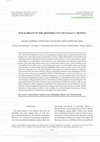
Event Management, 2019
The renovation of traditional events to suit contemporary demands carries important benefits for ... more The renovation of traditional events to suit contemporary demands carries important benefits for the hosting cities, such as the increase in the number of visitors, and the differentiation of destinations and urban spaces that are apparently similar for potential tourists. However, street events attract a considerable number of visitors that are concentrated in a very limited space for a short stay. Especially in historic cities with large number visitors, the so-called tourist-historic cities, events contribute to the commodification of public space, overcrowding, and overuse of certain public spaces and heritage assets during a very short period. Thus, the walkability of this urban area plays a key role in visitors’ satisfaction and experience. This article explores the perceptions of tourists in relation to walkability in the streets of the city center of Oaxaca, Mexico, during the celebration of the Guelaguetza Festival. The city center of Oaxaca was included in UNESCO’s World Heritage List and is one of the most visited urban destinations in Mexico, while the Guelaguetza is the most popular annual event in the city for national and international visitors. A mixed methodology was developed based on direct observation of tourists walking along the streets of central Oaxaca and the application of a questionnaire. The questionnaire focused on personal aspects and external aspects that affect the desire to walk, such as safety, cleanliness, traffic congestion, and pollution. The results showed relevant differences according to the visitor’s background and allowed to suggest some urban improvements to increase visitors’ satisfaction. Urban design to achieve a more walkable city is closely related to the success of street festivals and should be included in the early stages of an event’s design.
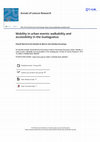
Annals of Leisure Research, 2022
Walkability plays a key role in visitors’ satisfaction and experience of events hosted in histori... more Walkability plays a key role in visitors’ satisfaction and experience of events hosted in historic centres. In addition, the lack of physical accessibility is one of the main environmental barriers to the participation of persons with reduced mobility in artistic and cultural events. The objective of the research is to analyse the existing walkability and accessibility measures in the Guelaguetza Festival (Oaxaca, Mexico). Mixed methods, especially qualitative, but also quantitative ones, were applied: direct observation of visitors moving along the streets of central Oaxaca, architectural analysis of the main venue, application of a questionnaire, interactions with attendees and officials, and analysis of public policy documents. The results showed relevant differences according to the visitor’s background and severe restrictions for persons with reduced mobility. However, they allowed suggesting some urban improvements to enhance attendees’ satisfaction with the festival.
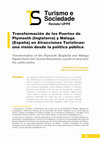
Turismo e Sociedade, 2020
Las rápidas transformaciones en la economía y en el comercio han derivado en la obsolescencia de ... more Las rápidas transformaciones en la economía y en el comercio han derivado en la obsolescencia de espacios portuarios en todo el mundo. En el contexto europeo, numerosas ciudades han transformado dichas instalaciones en atracciones turísticas. En el proceso participan varias políticas públicas no siempre de forma coordinada, entre las que se encuentran la política turística, la urbanística y la cultural. El presente trabajo tiene como objetivo analizar la reconversión parcial de antiguos puertos industriales en áreas de ocio y consumo turístico, tomando para ello dos casos de estudio europeos: Málaga (Andalucía, España) y Plymouth (Inglaterra, Reino Unido). Es una investigación descriptiva y explicativa y la metodología consistió en el análisis de planes urbanísticos y documentos de política pública municipal de ambas ciudades, así como en observación directa. El análisis se dividió en cinco categorías: movilidad externa, movilidad interna, usos, incorporación del patrimonio e integración en el contexto urbano. Los resultados apuntan a importantes diferencias en los dos casos, especialmente destacables en cuanto a movilidad dentro del recinto portuario y a la rehabilitación y reutilización del patrimonio edificado. La investigación presentada puede ser útil para otras ciudades que se encuentran inmersas en transformaciones similares de sus recintos portuarios.
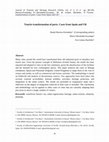
Journal of Tourism and Heritage Research, 2020
Many cities around the world have transformed their old industrial ports to introduce new tourist... more Many cities around the world have transformed their old industrial ports to introduce new tourist uses. From the pioneer example of Baltimore (United States), the model has been repeated and adapted in cities on the five continents, given the obsolescence of the facilities and the demand for new consumption spaces. This paper analyzes the cases of Malaga (Andalusia, Spain) and Plymouth (England, United Kingdom) to adapt them to the visit of cruises and yachts, as well as commercial and leisure activities. The methodology is based on fieldwork and analysis of documentary sources. Five approaches have been taken into account: external accessibility, internal mobility, activities, heritage protection, and integration in the urban context. The results are presented in comparative maps and a reflection on the degree of integration achieved in both cases is included. The conclusions and methodology can be applied in other cases of cities that are currently adapting their port areas to attract a larger number of visitors.
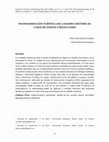
Journal of Tourism and Heritage Research , 2020
Las ciudades históricas están viviendo actualmente un auge en el número de turistas y en la diver... more Las ciudades históricas están viviendo actualmente un auge en el número de turistas y en la diversidad de estos. El cambio de usos tradicionales por actividades relacionadas con los visitantes y los cambios en las pautas de movilidad afectan profundamente a la vida diaria de los centros urbanos. Se hace necesario analizar su distribución espacial para poder tomar medidas adecuadas tanto en el planeamiento urbano como en el resto de políticas públicas. El presente trabajo analiza dicho fenómeno en las ciudades históricas de Málaga (Andalucía, España) y Plymouth (Inglaterra, Reino Unido). Para ello, se ha aplicado una metodología mixta consistente en trabajo de campo, clasificación de las actividades en grupos, volcado de la información utilizando un Sistema de Información Geográfica (SIG), preparación de planos sintéticos y elaboración de conclusiones. Los resultados muestran qué áreas están consolidadas desde el punto de vista de su uso turístico y cuáles están en proceso de consolidación. La metodología puede ser aplicada a ciudades históricas que presentan dinámicas similares de renovación para incrementar las actividades turísticas.
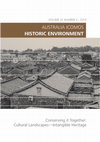
Historic Environment, 2019
Traditional festivals are the origin of many international events that have become highly popular... more Traditional festivals are the origin of many international events that have become highly popular over the years. This process brings positive outcomes to a city in terms of local pride and an increase in the number of visitors, but it poses several risks related to overcrowding and loss of authenticity. This research is focused on the Festival Internacional Cervantinois one of the major cultural events in Latin America. The objective of the research discussed in this paper was to measure visitors’ experience in relation to placemaking, focusing on the perception of urban services and the city’s image. The relationship between the festival and the visit to heritage resources and attractions was especially highlighted and analysed. The methodology that was applied is based on the Event Experience Scale, which is being used in the study of visitors’ experience in events worldwide. It was found that the Festival Internacional Cervantino contributes only partially to modify the perception that tourists have from the city of Guanajuato, there are a number of urban services needing improvement, and foreign discourses were incorporated to the festival, leaving behind some fundamental aspects for the city’s identity and the event’s authenticity.
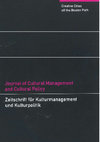
Journal of Cultural Management and Cultural Policy, 2020
Mexico currently lodges 35 sites included in the UNESCO World Heritage list, ranking 7th worldwid... more Mexico currently lodges 35 sites included in the UNESCO World Heritage list, ranking 7th worldwide and 1st in the American Continent. In 2017 the country became the 6th most visited nation by international tourists (World Tourism Organization, 2018). Such a great cultural and economic activity poses pressure to historic cities and cultural events in terms of adaptation to contemporary tourist demands. The new purpose is to attract visitors and private investments, supported by marketing strategies that disseminate an image of an innovative and creative city rooted in a real or symbolically constructed culture (Getz, 2008; Quinn, 2006). Focusing on the economic use of culture, MacCannell (1976) and Rifkin (2001) state that this is the basis of leisure and the repository of modern society’s values, including economic ones. That is why the creation of cultural experiences, among which events play a central role, has become a fundamental part of global society (Rooijakkers, 1999). Regarding urban design, the process implies public space refurbishment strategies concentrated in the main commercial axes (Exceltur, 2013), leading to the design of homogeneous tourist spaces as a “stage” (Zukin, 1987). These operations are not unique and rooted in the local culture, but are the product of global planning and development (Ashworth & Page, 2011). As Toselli (2006) states, this trend causes a process of "culturalization" of the destination, including trivialization or "staged authenticity", in which architecture, crafts or local festivities are just a stage for tourists. Under such complex reality, this work compares two major Mexican events held in World Heritage cities. Guanajuato is seat to The Festival Internacional Cervantino, greatly focused on worldwide Fine Arts. This festival represents the essence of a Mexican region that highlights the Hispanic past as part of its identity discourse. In fact, theming is so strong that external Spanish references prevail. Meanwhile, Oaxaca is famous because of the Guelaguetza, an indigenous traditional festival whose precedents root back in time for five centuries. Focused on cultural change and sustainability, tourist perception, identity narrative and city theming, the analysis included anthropological and urban views and methodologies. Results show high contrasts between the analyzed events, due in part to the anthagonic (Indigenous vs. Spanish) identities. Such tension is characteristic not only in Mexico but in most parts of Latin America, where cultural syncretism is still ongoing.

Espaço Aberto, 2019
Archaeometry is the application of Natural Sciences techniques, including Geography, to solve pro... more Archaeometry is the application of Natural Sciences techniques, including Geography, to solve problems in Archaeology and Heritage Conservation. Corrosion constitutes the main deterioration process of metals, which is triggered by the properties of the surrounding matrix. This work focuses on atmospheric corrosion in Oaxaca, Mexico. Methods used included the creation of atmospheric corrosion stations where weight loss was measured and geo-localization of archaeo-metallurgical heritage was determined in the study area. A brief historical review of the cultural importance of metals in Mexico is also treated. Results for the three first months of measurement showed that atmospheric corrosion values are higher in the city centre, where heritage is more concentrated. Air pollution and increased temperatures attributed to global warming are considered to be relevant for explaining the data obtained. Further analysis of a full year cycle is expected to reinforce this argument. The methods used are shown to be useful heritage and urban management tools applicable to other geographic spaces.
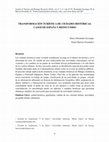
Journal of Tourism and Heritage Research, 2020
Las ciudades históricas están viviendo actualmente un auge en el número de turistas y en la diver... more Las ciudades históricas están viviendo actualmente un auge en el número de turistas y en la diversidad de estos. El cambio de usos tradicionales por actividades relacionadas con los visitantes y los cambios en las pautas de movilidad afectan profundamente a la vida diaria de los centros urbanos. Se hace necesario analizar su distribución espacial para poder tomar medidas adecuadas tanto en el planeamiento urbano como en el resto de políticas públicas. El presente trabajo analiza dicho fenómeno en las ciudades históricas de Málaga (Andalucía, España) y Plymouth (Inglaterra, Reino Unido). Para ello, se ha aplicado una metodología mixta consistente en trabajo de campo, clasificación de las actividades en grupos, volcado de la información utilizando un Sistema de Información Geográfica (SIG), preparación de planos sintéticos y elaboración de conclusiones. Los resultados muestran qué áreas están consolidadas desde el punto de vista de su uso turístico y cuáles están en proceso de consolidación. La metodología puede ser aplicada a ciudades históricas que presentan dinámicas similares de renovación para incrementar las actividades turísticas.
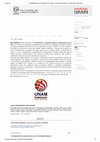
MEC-EDUPAZ, 2019
La renovación de eventos culturales tradicionales supone una actualización del vínculo del patrim... more La renovación de eventos culturales tradicionales supone una actualización del vínculo del patrimonio intangible con la sociedad. Además, conlleva importantes beneficios económicos derivados del aumento del atractivo turístico y por tanto del número de visitantes, así como por la diferenciación que se consigue de espacios urbanos en relación con ciudades que comparten características históricas y culturales. Por otra parte, la llegada de un número significativo de visitantes en el breve periodo de tiempo que dura la celebración de un evento cultural conlleva retos importantes en cuanto a gestión urbanística, destacando especialmente la ocupación del espacio público y la movilidad. De la correcta gestión de estos aspectos dependerá que los visitantes se lleven una imagen positiva de la ciudad, o que de lo contrario el evento en su generalidad tenga un impacto neutro e incluso negativo en la imagen urbana. La investigación se centra en el caso de la Guelaguetza, que se celebra cada año en Oaxaca, México. El festival constituye uno de los eventos culturales más relevantes del continente americano en cuanto a reconocimiento del patrimonio intangible, así como el momento de mayor afluencia de visitantes, tanto nacionales como extranjeros, a la ciudad.
El objetivo es analizar la percepción de los visitantes a la Guelaguetza en Oaxaca y el impacto de la misma en servicios e infraestructuras urbanísticos, tales como movilidad, accesibilidad, gestión de residuos, iluminación, ruido, seguridad y conflictos en la utilización del espacio público. Se trabajó con una metodología mixta, consistente en primer lugar en la aplicación de un cuestionario basado en la Event Experience Scale (EES) a los asistentes. Además, se realizaron entrevistas en distintas dependencias del Gobierno del Estado y del Ayuntamiento de Oaxaca encargados de planificar y gestionar los refuerzos de los servicios urbanísticos mencionados. Igualmente, la metodología se complementó con observación
directa durante la celebración de las diversas actividades asociadas al evento. Los resultados sirvieron para evidenciar la utilidad de las estrategias aplicadas en los últimos años, así como carencias y retos en la organización de los servicios urbanísticos reforzados durante la celebración de la Guelaguetza, lo cual afecta a la atracción y percepción de los
visitantes al evento y a la imagen que la ciudad proyecta. Este trabajo puede servir para lograr una mayor eficiencia de los servicios urbanísticos, lo que en suma puede repercutir
positivamente en la imagen externa e interna de la ciudad.
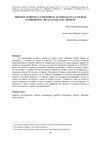
La antropología cognitiva estudia la cultura como contenido mental. Desde tal perspectiva y toman... more La antropología cognitiva estudia la cultura como contenido mental. Desde tal perspectiva y tomando en cuenta la tendencia a la idealización en los relatos históricos latinoamericanos es posible analizar las adaptaciones discursivas como respuesta cultural. La ciudad de Guanajuato, México, inscrita en la lista del Patrimonio Mundial de la UNESCO, posee una historia compleja previamente estudiada socialmente y desde un enfoque urbano. En este trabajo se estudian las nuevas narrativas históricas creadas a partir de la adaptación a la presión turística. Por lo tanto, el objetivo fue analizar el impacto sociocultural de la presión turística en la narrativa histórica de la ciudad de Guanajuato en términos del distanciamiento respecto a los datos históricos. Lo anterior, desde una perspectiva antropológica ya que se realizó un análisis de discurso a partir de fuentes escritas. También se tomó en cuenta la cultura material de la ciudad, lo cual le brinda un enfoque urbanístico a la investigación. El fenómeno se liga al menos en parte, en la adaptación del discurso a la presión turística a través de un proceso cognitivo de idealización
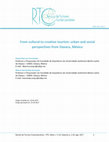
Nos últimos anos os turistas culturais tornaram-se interessados em atividades relacionadas com ex... more Nos últimos anos os turistas culturais tornaram-se interessados em atividades relacionadas com experiências, interagindo com os produtores para ser parte das atividades cotidianas dos moradores, o que levou ao desenvolvimento do turismo criativo. Historicamente, a cidade de Oaxaca, no México, teve um ambiente multicultural e criativo, e desses novos visitantes vimos como a oferta local tem aumentado rapidamente seguindo esta tendência. A partir de uma perspectiva urbana, o objetivo da pesquisa é avaliar se as atividades criativas criaram um bairro criativo e se esta área é diferente da área turística cultural consolidada. Para isso, analisamos a distribuição das atividades relacionadas ao turismo cultural tradicional e novas atrações criativas, mostrando duas tendências: por um lado há uma densificação de atividades na área turística pré-consolidado, mas por outro lado há uma extensão da área turística graças ao interesse crescente destes turistas na busca de autenticidade e do alternativo.
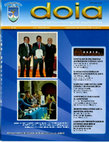
DOIA, 2016
Muchas ciudades han optado por conformar un área turística en su centro histórico con característ... more Muchas ciudades han optado por conformar un área turística en su centro histórico con características cada vez más similares, resumidas en la creación de un ambiente de apariencia histórica que elimina todos aquellos aspectos disonantes con la idea nítida que se quiere transmitir a los visitantes. La presente investigación analiza dicho proceso en la ciudad de Málaga y para llevarla a cabo nos hemos centrado en cuatro aspectos: la selección de bienes patrimoniales, la sustitución de residentes, la pérdida en la diversidad de usos y la modificación de su integridad cultural. Se puede observar que solo los elementos patrimoniales más icónicos han sido rescatados, mientras que el patrimonio que tiene valor de conjunto ha sufrido importantes pérdidas. Asimismo, este proceso ha conllevado una pérdida de población y su reemplazo por residentes de mayor poder adquisitivo. Igualmente, se ha producido una concentración de usos y servicios volcados en el turista a expensas de la pérdida de la mezcla de actividades previa. Finalmente, se han enfatizado las tradiciones y los eventos de nuevo cuño que mejor responden a la imagen prefijada (Urry, 1990) que tienen los turistas de la ciudad.
Many cities have consolidated a tourist area in their historic centre with increasingly similar characteristics, summarised in the creation of an urban environment that is apparently historical and gets rid of every dissonant aspect with the clear image that is wanted to be transmitted to visitors. The present research analysis this process in the city of Malaga. In order to develop it, four aspects have been considered, namely heritage selection, replacement of residents, lose of mix of uses and modification of its cultural integrity. It can be observed that only the most iconic heritage assets have been preserved, while those elements that have value due to their general character have suffered important losses. In addition, this process has led to the loss of population and their replacement by more wealthy residents. Furthermore, there has been a concentration of activities and services focused on tourists at the expense of the loss of the previous mix of uses. Finally, traditions and new events that better respond to the tourist gaze (Urry, 1990) have been emphasised.
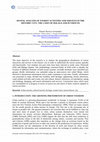
The main objective of the research is to analyse the geographical distribution of tourist attract... more The main objective of the research is to analyse the geographical distribution of tourist attractions and services in the historic city in order to understand the tourist system spatially and functionally. Two medium size port cities have been selected as study cases: Plymouth (UK) and Malaga (Spain). The methodology consisted firstly of field work to identify the location of different elements of both tourist systems, secondly elements were classified into groups, thirdly information was uploaded using an open-source tool called Meipi, which allowed to disseminate information and to make comments in real time. Finally, information was presented in maps, divided into mobility, built heritage, sightseeing, leisure attractions, water-related activities and events, arts and culture, historic references, accomodation, eating and drinking, shopping, and tourist information and services. Conclusions show which areas are consolidated or in progress in terms of tourist use and which of them could be adapted to tourist activities.

Purpose – The purpose of this paper is to focus on the Festival Internacional Cervantino, which r... more Purpose – The purpose of this paper is to focus on the Festival Internacional Cervantino, which represents one of the major cultural events in Latin America. Based on theoretical propositions regarding tourism as an experience, perception of visitors was studied focussing on emotional factors. Urban perception was also addressed, especially where public service failure affected the experience and therefore, the placemaking.
Design/methodology/approach – A mixed methodology was applied. First, the event experience scale (EES) methodology for visitors’ perception was performed in order to collect data directly from tourists.
The relationship between the festival and the visit to heritage resources and attractions was especially highlighted and analysed. Urban field work focussed on expressing the location of the most visited areas during festival days. Public services were also assessed where perception was affected negatively. Interviews were applied to public administration officials and public policy-related documents were collected in order to understand the expectation of visitors, previous to the experience itself. Local perception was also contrasted with the rest of the data.
Findings – Attracted by information about the historic and colonial nature of the city, tourists gather massively in Guanajuato during the festival. This event in particular yields in some aspects to a transient placemaking, mainly related to inner perception and the event as such is highly appreciated. It was also found that the foreign figure of Cervantes was incorporated into the intangible heritage discourse of the city and
linked to the event itself. However, some urban spaces and services need improvement to consolidate a positive experience of visitors who complain about specific factors such as traffic, accessibility, waste disposal and environmental noise.
Social implications – The fact that the event has caused some problems in a number of urban aspects suggests that new policies might be proposed in order to fill these gaps, especially by the corresponding government agencies. Another issue relates to the concentration of the economic profits and its lack of distribution, which right now does not contribute to social sustainability, yet the event demands high actions
and costs to the city and local people.
Originality/value – The research has been useful to give another point of view to existing surveys and conclusions of the impact of the festival. The application of EES has yielded some improvements that could be made in further applications of the same methodology. Application of EES to assess the impact of events in urban spaces and services can be applied to many other cities that host festivals in their city centres.










Uploads
Articles by Marco Hernández-Escampa
El objetivo es analizar la percepción de los visitantes a la Guelaguetza en Oaxaca y el impacto de la misma en servicios e infraestructuras urbanísticos, tales como movilidad, accesibilidad, gestión de residuos, iluminación, ruido, seguridad y conflictos en la utilización del espacio público. Se trabajó con una metodología mixta, consistente en primer lugar en la aplicación de un cuestionario basado en la Event Experience Scale (EES) a los asistentes. Además, se realizaron entrevistas en distintas dependencias del Gobierno del Estado y del Ayuntamiento de Oaxaca encargados de planificar y gestionar los refuerzos de los servicios urbanísticos mencionados. Igualmente, la metodología se complementó con observación
directa durante la celebración de las diversas actividades asociadas al evento. Los resultados sirvieron para evidenciar la utilidad de las estrategias aplicadas en los últimos años, así como carencias y retos en la organización de los servicios urbanísticos reforzados durante la celebración de la Guelaguetza, lo cual afecta a la atracción y percepción de los
visitantes al evento y a la imagen que la ciudad proyecta. Este trabajo puede servir para lograr una mayor eficiencia de los servicios urbanísticos, lo que en suma puede repercutir
positivamente en la imagen externa e interna de la ciudad.
Many cities have consolidated a tourist area in their historic centre with increasingly similar characteristics, summarised in the creation of an urban environment that is apparently historical and gets rid of every dissonant aspect with the clear image that is wanted to be transmitted to visitors. The present research analysis this process in the city of Malaga. In order to develop it, four aspects have been considered, namely heritage selection, replacement of residents, lose of mix of uses and modification of its cultural integrity. It can be observed that only the most iconic heritage assets have been preserved, while those elements that have value due to their general character have suffered important losses. In addition, this process has led to the loss of population and their replacement by more wealthy residents. Furthermore, there has been a concentration of activities and services focused on tourists at the expense of the loss of the previous mix of uses. Finally, traditions and new events that better respond to the tourist gaze (Urry, 1990) have been emphasised.
Design/methodology/approach – A mixed methodology was applied. First, the event experience scale (EES) methodology for visitors’ perception was performed in order to collect data directly from tourists.
The relationship between the festival and the visit to heritage resources and attractions was especially highlighted and analysed. Urban field work focussed on expressing the location of the most visited areas during festival days. Public services were also assessed where perception was affected negatively. Interviews were applied to public administration officials and public policy-related documents were collected in order to understand the expectation of visitors, previous to the experience itself. Local perception was also contrasted with the rest of the data.
Findings – Attracted by information about the historic and colonial nature of the city, tourists gather massively in Guanajuato during the festival. This event in particular yields in some aspects to a transient placemaking, mainly related to inner perception and the event as such is highly appreciated. It was also found that the foreign figure of Cervantes was incorporated into the intangible heritage discourse of the city and
linked to the event itself. However, some urban spaces and services need improvement to consolidate a positive experience of visitors who complain about specific factors such as traffic, accessibility, waste disposal and environmental noise.
Social implications – The fact that the event has caused some problems in a number of urban aspects suggests that new policies might be proposed in order to fill these gaps, especially by the corresponding government agencies. Another issue relates to the concentration of the economic profits and its lack of distribution, which right now does not contribute to social sustainability, yet the event demands high actions
and costs to the city and local people.
Originality/value – The research has been useful to give another point of view to existing surveys and conclusions of the impact of the festival. The application of EES has yielded some improvements that could be made in further applications of the same methodology. Application of EES to assess the impact of events in urban spaces and services can be applied to many other cities that host festivals in their city centres.
El objetivo es analizar la percepción de los visitantes a la Guelaguetza en Oaxaca y el impacto de la misma en servicios e infraestructuras urbanísticos, tales como movilidad, accesibilidad, gestión de residuos, iluminación, ruido, seguridad y conflictos en la utilización del espacio público. Se trabajó con una metodología mixta, consistente en primer lugar en la aplicación de un cuestionario basado en la Event Experience Scale (EES) a los asistentes. Además, se realizaron entrevistas en distintas dependencias del Gobierno del Estado y del Ayuntamiento de Oaxaca encargados de planificar y gestionar los refuerzos de los servicios urbanísticos mencionados. Igualmente, la metodología se complementó con observación
directa durante la celebración de las diversas actividades asociadas al evento. Los resultados sirvieron para evidenciar la utilidad de las estrategias aplicadas en los últimos años, así como carencias y retos en la organización de los servicios urbanísticos reforzados durante la celebración de la Guelaguetza, lo cual afecta a la atracción y percepción de los
visitantes al evento y a la imagen que la ciudad proyecta. Este trabajo puede servir para lograr una mayor eficiencia de los servicios urbanísticos, lo que en suma puede repercutir
positivamente en la imagen externa e interna de la ciudad.
Many cities have consolidated a tourist area in their historic centre with increasingly similar characteristics, summarised in the creation of an urban environment that is apparently historical and gets rid of every dissonant aspect with the clear image that is wanted to be transmitted to visitors. The present research analysis this process in the city of Malaga. In order to develop it, four aspects have been considered, namely heritage selection, replacement of residents, lose of mix of uses and modification of its cultural integrity. It can be observed that only the most iconic heritage assets have been preserved, while those elements that have value due to their general character have suffered important losses. In addition, this process has led to the loss of population and their replacement by more wealthy residents. Furthermore, there has been a concentration of activities and services focused on tourists at the expense of the loss of the previous mix of uses. Finally, traditions and new events that better respond to the tourist gaze (Urry, 1990) have been emphasised.
Design/methodology/approach – A mixed methodology was applied. First, the event experience scale (EES) methodology for visitors’ perception was performed in order to collect data directly from tourists.
The relationship between the festival and the visit to heritage resources and attractions was especially highlighted and analysed. Urban field work focussed on expressing the location of the most visited areas during festival days. Public services were also assessed where perception was affected negatively. Interviews were applied to public administration officials and public policy-related documents were collected in order to understand the expectation of visitors, previous to the experience itself. Local perception was also contrasted with the rest of the data.
Findings – Attracted by information about the historic and colonial nature of the city, tourists gather massively in Guanajuato during the festival. This event in particular yields in some aspects to a transient placemaking, mainly related to inner perception and the event as such is highly appreciated. It was also found that the foreign figure of Cervantes was incorporated into the intangible heritage discourse of the city and
linked to the event itself. However, some urban spaces and services need improvement to consolidate a positive experience of visitors who complain about specific factors such as traffic, accessibility, waste disposal and environmental noise.
Social implications – The fact that the event has caused some problems in a number of urban aspects suggests that new policies might be proposed in order to fill these gaps, especially by the corresponding government agencies. Another issue relates to the concentration of the economic profits and its lack of distribution, which right now does not contribute to social sustainability, yet the event demands high actions
and costs to the city and local people.
Originality/value – The research has been useful to give another point of view to existing surveys and conclusions of the impact of the festival. The application of EES has yielded some improvements that could be made in further applications of the same methodology. Application of EES to assess the impact of events in urban spaces and services can be applied to many other cities that host festivals in their city centres.
ports in two medium-size cities: Plymouth and Malaga, focusing on whether the projects have
matched the initial objectives to turn the facilities into tourist attractions as well as to integrate them in the city life. The methodological process is based on a comparative analysis of five different issues, namely external accessibility, internal mobility, activities, heritage protection and general integration in the urban context. The research process has ended up in the production of comparative maps. Major differences between both examples can be found in the integration of heritage, both cultural and natural, the consolidation of a mix of uses and the existence of physical barriers between the port and the rest of the city.
marketing display through which these cities attract visitors. Therefore, urban performances tend to drift apart from actual historic discourse altering local
self-perception. Even so, such changes can be accepted by the inhabitants due to the actual or perceived benefit of tourist presence or due to self-idealization of a mythic past. The aim of this work is to explore the complex relationships between tourist marketing and social representation in order to clarify this phenomenon. The historic city of Guanajuato, Mexico, which is included in the UNESCO World Heritage List, is taken as a case study. Urban Studies, Cognitive Anthropology methods and data are considered in this research. Results may be useful to assess the impact of imaginary changes in the tourist activity as well as in sociocultural identity.
caracterizó en lo político por un discurso nacionalista que pretendió unificar a un país multicultural, a la vez que legitimó a las nuevas estructuras de poder. Durante tal proceso, los hechos y personajes históricos frecuentemente fueron resignificados en el imaginario colectivo, alejándose de la fidelidad de los sucesos. Los fenómenos mencionados propiciaron el surgimiento de una gran diversidad de íconos culturales que enfatizaron el naciente ideal de lo nacional mexicano, creándose así una cosmovisión que puede incluso considerarse como una mitología contemporánea.
Asimismo, nuevas ideologías europeas se arraigaron en nuestro país, especialmente el marxismo y su inherente postura antiimperialista. De esta manera, tanto el indigenismo como el socialismo marcaron el contexto político y cultural mexicano durante el siglo
xx. Fue desde esta perspectiva que surgió tan vasta constelación de signos, figuras y símbolos nuevos o reelaborados; uno de los más singulares símbolos nacionalistas de dicha centuria fue creado a partir de una realidad biológica y de la información etnohistórica contenida en documentos coloniales. Se trata de la figura del perro mexicano, conocido como xoloitzcuintle, de origen mesoamericano.
La perspectiva del estudio se relaciona con el aprendizaje social y la percepción de
la experiencia que suceden durante la realización del evento. Por lo tanto, se recurre
a una perspectiva fundamentalmente antropológica y, en específico, desde la
antropología cognitiva. A continuación, se ofrecen, brevemente, algunos fundamentos
de esta disciplina con la finalidad de brindar un punto de partida teórico.
La antropología cognitiva es el estudio del pensamiento humano en términos
sociales, estudia la manera de pensar de los grupos humanos o actores sociales
acerca de los objetos y eventos del mundo (D’Andrade, 1995). El surgimiento de
esta subdisciplina se basó en el relativismo cultural manifiesto en la obra de Franz
Boas y en las aportaciones desde la lingüística y la psicología, creándose la noción
del punto de vista nativo o visión (Agar, 1982; Colby, 1996; Erickson y
Murphy, 2003). Problemas centrales para la antropología cognitiva incluyen la
influencia del lenguaje y otros sistemas semióticos sobre el raciocinio humano, la
relación entre lenguaje y pensamiento, así como la organización del conocimiento
al interior de la mente humana (Brown, 2006). En términos cognitivos, Boas defendió
la unidad psíquica de la humanidad y definió la cultura como un contenido
mental, mismo que se encuentra sujeto a un proceso de transmisión (Shore, 1996).